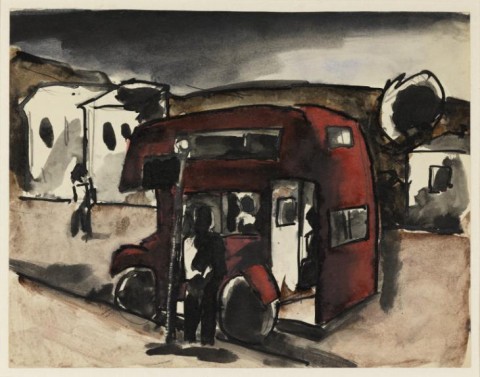One’s never too old to be read a story. There’s no shame in stealing a couple of minutes from your busy, stress-filled day to let actress Susan Sarandon read you one, above.
Goodnight Moon was never a part of my childhood, but it came into heavy rotation when my own kids were little. It wasn’t a title they clamored for—in my experience, the intended demographic favors the junky and cringe-inducing over classics of children’s literature, but no matter.
All day, I indulged their hankering for tales of preschool-aged dinosaurs who had to be taught how to share, giant silly cookies, and a certain television character who reacted poorly to being passed over as flower girl. In return, I ruled the night.
I treasured Goodnight Moon not so much because it made them fall asleep—there are shelves upon shelves of dependable choices in that department—but rather for its simplicity. There were no moral lessons. Nothing sparkly or magic or forced. Nothing that catered to their supposed whims. Author Margaret Wise Brown’s stated aim with regard to the child reader was “to jog him with the unexpected and comfort him with the familiar.”
I approve. But there’s not a lot of jogging in Goodnight Moon. Just that comb and that brush and that bowlful of mush. What a blessed relief.
As one approaches the end, Goodnight Moon begins to rival Charlotte’s Web as children’s literature’s great meditation on death. The catalogue of all those things we’re saying goodnight to harkens to the final scene in Our Town, when the newly dead Emily, revisiting her childhood home, cries, “All that was going on in life and we never noticed.”
Every time my small crew made it to “goodnight stars, goodnight air, goodnight noises everywhere,” I was croaking. (Not figuratively, though a little research reveals I am not the only one to think this lovely phrase would make a great epitaph.)
This emotional collapse was equal parts cathartic and embarrassing. What can I say? My cup ranneth over. I was glad to learn that E. B. White’s voice betrayed him, too, recording Charlotte’s Web’s most poignant scene.
“Oh, earth, you’re too wonderful for anybody to realize you.”
Narrating the lightly animated story for 1999’s Goodnight Moon & Other Sleepytime Tales, Sarandon exhibits astonishing self control. It’s probably a good thing for children everywhere to see that there’s at least one adult out there with the steel to soldier through. Her youngest child was still little when she went into the recording booth. If she’d wanted, she could’ve milked it for every last drop of pathos, but I’m glad she played it straight, because most of us can’t.
(And few of us can write a book so elegant on a topic so profound. Sarandon’s would-be publishers rejected her children’s book about a “very funny raccoon” who dies.”)
Find other great stories in our collection, 1,000 Free Audio Books: Download Great Books for Free.
Related Content:
Christopher Walken Reads Where The Wild Things Are
Free Audio: Go the F–k to Sleep Narrated by Samuel L. Jackson
Download Bryan Cranston’s Reading of You Have to F–king Eat as a Free Audio Book (NSFW)
Ayun Halliday is an author whose sole contribution to the picture book canon is Always Lots of Heinies at the Zoo. Follow her @AyunHalliday



![Letter from Kenneth Armitage to Joan Moore [1951] by Kenneth Armitage 1916-2002](https://cdn8.openculture.com/wp-content/uploads/2014/12/Kenneth-Armitage-Letter.jpg)



